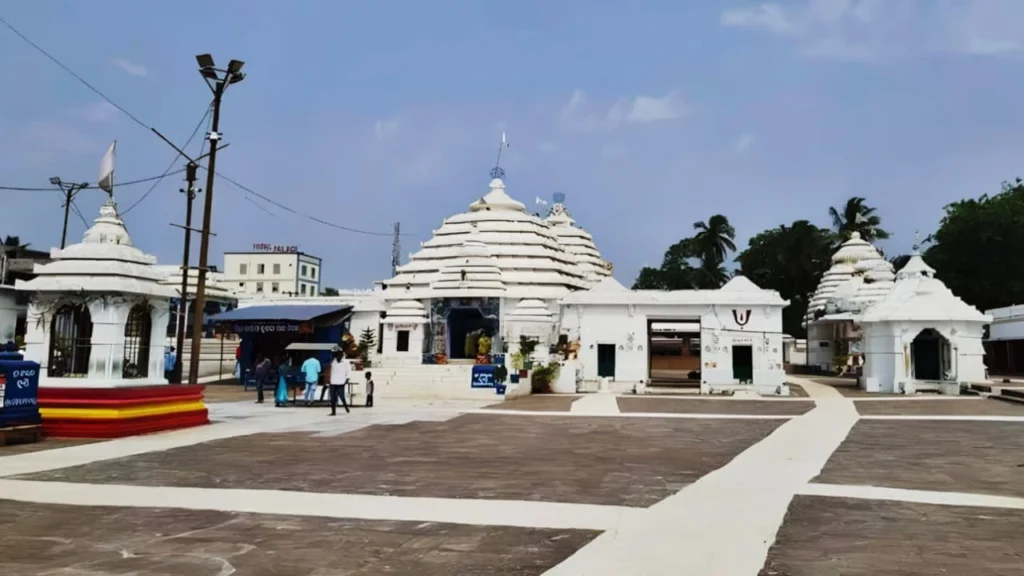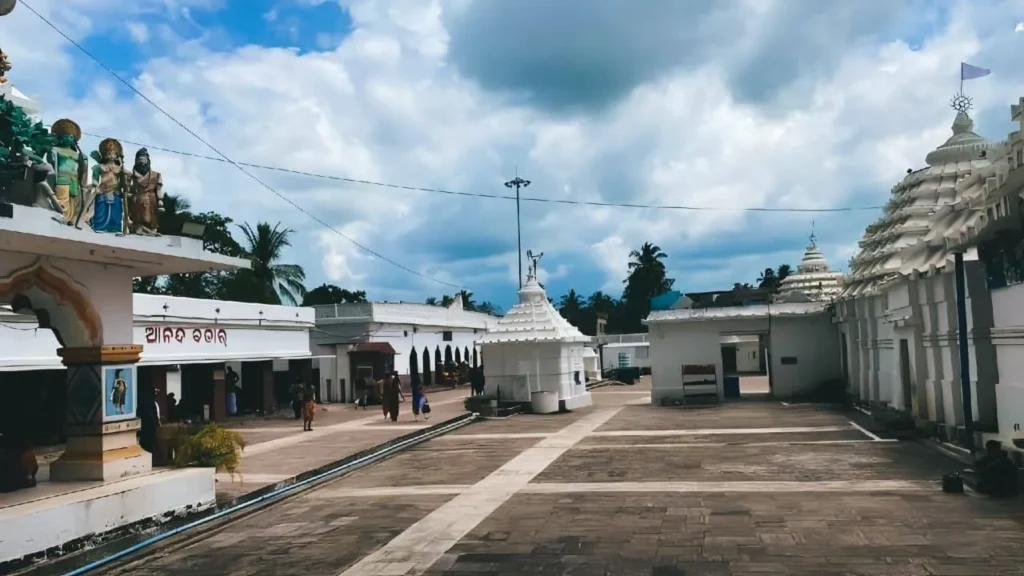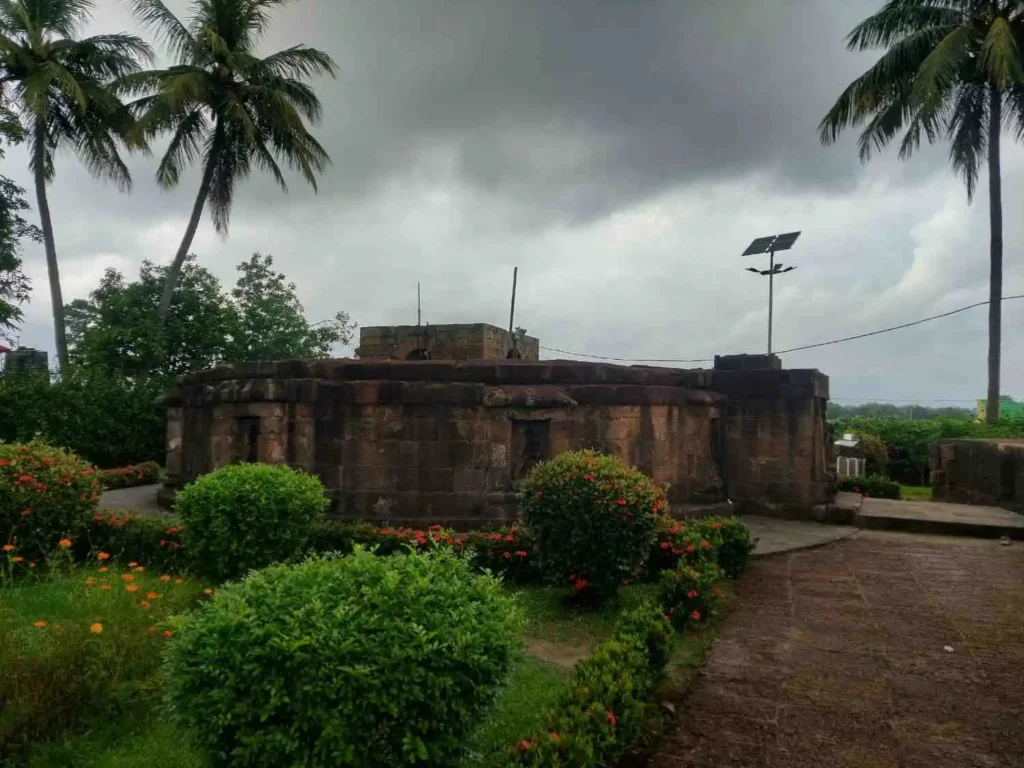
Table of Contents
Temples do more than offer spaces for worship—they tell living stories of our faith, culture, and resilience. One such divine treasure stands in Kendrapara, Odisha—the Baladevjew Temple. Devotees dedicate this temple to Lord Balarama, the elder brother of Lord Krishna, and recognize it as both a sacred space and a symbol of spiritual endurance and devotion.
In this blog, we’ll explore the history, legends, architecture, and cultural significance of Baladevjew Temple. Whether you admire history, seek spirituality, or travel for cultural insight—this read will inspire you to add Kendrapara to your pilgrimage list.A Glimpse into the Sacred: What Is Baladevjew Temple Known For?

Baladevjew Temple is one of the most significant temples in Odisha, located in Kendrapara district, often referred to as Tulasi Kshetra. The temple is dedicated to Lord Balarama, also known as Baladeva or Balabhadra, along with Lord Jagannath and Goddess Subhadra, echoing the divine trinity worshipped in the famous Puri Jagannath Temple.
What makes this temple special is not just its deities, but the legend, resilience, and community that surrounds it.
Tracing the Roots: The History of Baladevjew Temple
Builders originally constructed the Baladevjew Temple in ancient times. However, during Aurangzeb’s rule, the Mughal forces destroyed it. Fortunately, the temple rose again under the Maratha rule in Odisha, and this revival showcased the community’s unwavering devotion.
Interestingly, a Muslim mosque now stands on the original temple site. Therefore, devotees constructed the current structure in the Pidha style, known for its distinctive layered, tower-like form. Moreover, artists adorned both the temple and its Jagamohana (prayer hall) with intricate mythological murals on the ceilings and inner walls, all beautifully plastered and painted.Why Do Devotees Worship Baladevjew Here?
A powerful legend forms the foundation of the temple’s origin. Lord Balarama, during the time of the Mahabharata, chose not to participate in the great war. Instead, he began a pilgrimage across southern Bharatavarsha to destroy demonic forces.
When he reached Jajpur, Brahmins informed him about the demon Kandarasura, who terrorized the surrounding region. Without hesitation, Balarama defeated the demon on Lalita Hill, near Kendrapara and Jajpur.
Later, Balarama married Tulasi, Kandarasura’s daughter. To honor her wish, he dedicated this sacred land to her and promised that in Kaliyuga, devotees would worship him here as Mani Vigraha (sacred idol). Eventually, a cowherd named Sidha Das discovered the idol in a Tulasi garden, which marked the beginning of this revered place of worship.
Architectural Beauty & Cultural Mirror

The temple proudly follows the Jagannath Temple tradition and celebrates its festivals and rituals with grandeur and deep devotion. Every year, thousands of devotees visit Kendrapara—especially during Rath Yatra, Snana Purnima, and other major Hindu festivals—to experience spiritual bliss and divine celebration.
Artists have adorned the Jagamohana, sanctum sanctorum, and temple walls with vivid paintings that narrate mythological episodes—thus transforming the temple into more than just a place of worship; it stands as a cultural museum of living faith.Why Do People Call Kendrapara Tulasi Kshetra?
People lovingly refer to Kendrapara as Tulasi Kshetra because, according to legend, Tulasi—the daughter of Kandarasura and wife of Balarama—blessed this land. As a result, the entire region holds sacred significance, firmly placing it on Odisha’s spiritual map as a revered pilgrimage destination.
People Also Ask (FAQs)
1. Where is Baladevjew Temple located?
You can find the temple in the Kendrapara district of Odisha, approximately 90 km from Bhubaneswar.
2. Which deity is worshipped in Baladevjew Temple?
3. What is the significance of Tulasi Kshetra?
4. When did they build the Baladevjew Temple?
5. How is Baladevjew Temple related to the Puri Jagannath Temple?
Why You Should Visit Baladevjew Temple
When you visit Baladevjew Temple, you do more than take a pilgrimage—you actively walk into a realm of mythology, history, and cultural resilience. Moreover, whether you arrive with deep faith, seek to explore timeless heritage, or simply follow your curiosity for Odisha’s spiritual treasures, Kendrapara’s Tulasi Kshetra will undoubtedly leave a lasting impression on your soul.


